






 |
 |
 |
 |
 |
 |
 |
Laufhunde - Meutehunde - Bracken The Segugio Italiano Menü Laufhunde - Meutehunde - Bracken |
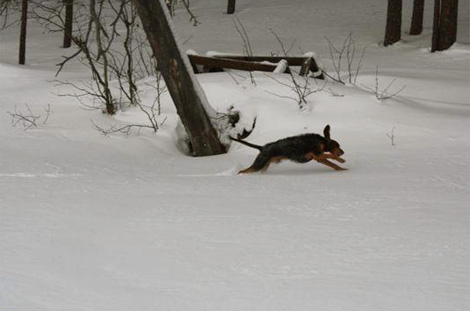 |
The Segugio Italiano in Finland Interview with Teija Viljanmaa by Sabine Middelhaufe Teija, your father, Raimo Viljanmaa, is a well known judge for the FCI groups 5, 6 and 7 at working trials and dog shows and breeder of Russian Hounds in his Bravon Kennel, so why did you yourself choose a mediterranean breed, the rough-haired Segugio Italiano, for hunting and breeding in your own Vigoroso Kennel? Teija: My father is actually the reason that I have rough-haired Segugi Italiani as he was looking for another hunting breed in the 1980's. He had been breeding the Finnish Hound for a very long time then and felt like trying something new. So he got in touch with competent people in Italy, Russia and Switzerland and asked all about their hunting dogs. As a result he bought his first Russian Hound in 1985 and took to this breed immediately. Years later, in 1995, he got a phone call from Italy to let him know that there were good Segugio Italiano pups available. My father thought about it for a while and finally agreed to buy two puppies, a male and a female. His idea was to see what kind of hunting dogs they would turn out to be and if they were not as good as his Russian Hounds he'd sell them. The pups came to Finland in November 1995, and when I saw the little things it was love at first sight! So I just took over the pups from my father and now it's almost 12 years that I have been breeding this Italian Hound. |
Vigoroso Caporale. (father: Bruno di Pontenizza) |
Your father imported the first Segugi directly from the Italian kennel "della Marciola"; they were followed years later by dogs from the two well known kennels "di Pompiano" and "di Pontenizza" which you selected yourself while travelling in Italy. These days Finland has a Segugio population of about 60 individuals. How did they fare in a country and climate so very different from their homeland? Teija: The dogs I brought home did fare very well indeed. The only setback I've encountered was with a bitch who had too long and too soft a coat, which, unfortunately, in our climate and with the amount of snow we face caused her some problems. So instead of becoming a working dog she is our well beloved family pet now. As for the other rough-haired Segugi I can confirm, that they have no difficulties even in deep snow as the snow doesn't accumulate in the hair around their legs. |
Vigoroso Francesco. |
In what kind of environment do you use the breed and for what game? Teija: From the very beginning we used the Segugi most of all for hunting hare and to some extent fox and racoon dog in the woods. Though I have to admit, I'd love to see them on a wild boar chase! Unfortunately, we have so few wild boars in Finland that we can't hunt them very much. We're talking about a population of maybe under 200 animals, and worse still, they live on the opposite side of Finland...! |
Bruno di Pontenizza. |
Do you work Segugi in a pack in Finland, as they usually do in Italy? Teija: No, normally we go hunting with just one dog. Finnish working trials are single dog tests only, and our whole hunting culture demands that this one dog works on the hare or fox , elk or big forest bird all by himself. But if you talk wild boar or bear hunt, we use a pack, not least because the prey is a threat to a single dog. Of course, there are some people who go hunting hare with two segugi, but it's not the rule. |
Bruno di Pontenizza and Vigoroso Bellissimo. |
How would you describe the Italian Hounds character? Teija: The Segugi we have in Finland are very sociable, intelligent and adaptable dogs with a good temperament. What I like very much about them is the eagerness and liveliness with which they go to work. They love hunting and you can see it in their behaviour. These characteristics are the reason why the Segugi managed to earn their place among the hunting dogs in Finland. Our own Finnish Hound, naturally, has an enormous following and it's really hard for other breeds to pass their scrutiny. But the Segugio has his own very special personality and stile which nowadays fascinates even the Finnish Hound supporters. |
Vigoroso Combattente (father: Bruno di Pontenizza) |
As a professional you are quite an expert on dog training. In your experience, is the Segugio different from other hounds as far as training is concerned? Teija: Well, he needs longer than for example the Finnish or the Russian Hound to get really ready for his job. Segugi get interested in the scent of hare at around the same stage of their development as other hounds do, but their infantile period is longer. What takes time, I think, is for them to develop their speed and the typical great eagerness to work. On the other hand, a Segugio is very easy to guide while working, which I find a great quality. And a Segugio will get better every year. He is more passionate than for instance the Finnish or Russian Hounds when following the hare or any other game. Also, he really likes to work for his master and you can call him back quite easily when the hunt is finished. This is a bit of an issue with some of the Finnish Hounds; they just like it too much to work for their own satisfaction and so it can be a problem to order them back from the forest. |
Segugi Chira and Rosa playing with Russian Hound puppy Taru. |
What about the Segugio's health? Teija: The Segugio population in Finland has shown no hereditary deseases and the hip dysplasia exams made for some animals have been absolutely fine. So far we have no allergic Segugi or anything else to be considered a serious health problem. |
Teija Viljanmaa with Vigoroso Dominatore (father: Bruno di Pontenizza) |
Now, let's talk about general breeding regulations and your own selective reproduction Teija: The Finnish Kennel Club has breeding regulations, of course. But as the Segugio has no health or other problems, he doesn't belong to the group of „border breeds“. Let me explain: in Finland we have the PEVISA-program, which evaluates breeds with serious health problems. Representatives of these breeds, before they are allowed to reproduce, must forgo certain health tests. For the German Shepherd for example that means hip and elbow x-rays, for the Collie eye exams, for the Dobermann all three of the before mentioned tests. As the Segugio has none of these problems it's all quite easy as far as general rules are concerned. |
Bruno di Pontenizza. |
You mentioned before that Working Trials in Finland are different from those in Italy. Can you explain? Teija: Well, most of all, our working trials are exclusively single dog tests. They take place in regular hunting areas, not in specific trial grounds and last a whole day. Every hound has two turns and 240 minutes in all to find the hare. As we are talking about enormous territories it might well happen that the dog simply can't find a hare during his first turn. But when he does and starts following his game, he has 120 minutes to keep the hare moving. As soon as the time is up the owner must call him back and put him on the leash. The team, led by a guide who is familiar with the area, will in any case go to a different part of the wood and the hound is sent off again to find a hare, his second one if he's been lucky before, allthough now he must find him before his total of 240 minutes is up. Let me explain: supposed the Segugio found the hare during his first turn after 35 minutes he now has 205 minutes left to find the second hare. When he finds him, he has again 120 minutes time to follow him. |
Italian import Segugio Morina di Pompiano. |
During trials we don't shoot the game, thus a really good hound is able (and supposed to) to keep the hare on the move for 120 minutes each turn. You see, we assume that a dog able to do this will also be able to give his master the opportunity to shoot during regular hunting. Anyway, the trial of one dog, who uses the maximum of time allowed, might last for twice 240 minutes, that is 8 hours, and normally a Segugio Italiano has no trouble at all to spend that time hunting, even in deep snow. While in Italy a dog is penalized if he does not give voice even on older tracks, our trial rules penalize the hound who gives voice before the hare moves. Let me make an example: supposed at 6 o'clock in the morning we let the Segugio off the leash in the forest. And supposed the hare was moving about there between 2 and 4 in the morning. Now, the hound is not allowed to give voice on this scent, because it's considered too old. But when he finds the cove that the hare has just left, he his supposed to bark on the fresh track that is between 2 to 20 minutes old, so that his master knows him near the prey. Obviously, we try to follow the dog, which nowadays is no problem thanks to GPS and radar. In the past, before the arrival of such gadgets, we simply waited for the hound to give voice and knew for certain where he was and that the hare was near, too. The voice of a Segugio Italiano sounds quite different, according to what he's doing at the time: forcing the hare out of his hiding place or following him. By the sound you even know quite precisely how many minutes he's behind the prey. In my book that's a very good thing, especially because in many other breeds it's rather difficult to understand what they're saying. My father, who is a judge himself, always tells me that our Segugio Rosa has such a good, differentiated voice that for her the maximum of points possible according to Finnish trial rules are definitely not good enough. For some Segugi our rules are a problem because they already bark on the older track, perhaps hours old, and long before they really find the hare and get him running. Some do this while others only give voice on the fresh track. So, from that perspective our trials are not the best for a Segugio Italiano, but this is not really a problem for me because they are excellent dogs in hunting practice. Up til now our best results have been one first place and one second place in a working trial. Which shows that a Segugio can be judged well even by Finnish rules! |
Bruno di Pontenizza. |
As you said, you don't mind going to Dog Shows.... Teija: Yes, and a couple of hounds bred by me plus one import dog had actually great success in dog shows. My breeding dog Vigoroso Caporale for instance (who's father is Bruno di Pontenizza) became Finland's best dog of the year 2009 – out of 100 participants! Personally, I quite like going to Dog Shows even though a success there is not my first priority for the breeding program. Let's say, Dog Shows are my hobby. When I have a beautiful dog, I can promise him that he'll get the chance to shine in a show... How do you keep your dogs fit for the hunting season, apart from the usual training? Teija: During the summer I go jogging with my dogs, usually with 2-4 dogs at the same time. And we also do Canicross, a new dogsport in Finland. In a competition I obviously have to run with only one dog. Bruno di Pontenizza's son, Vigoroso Caporale, has already participated with me in the Finnish Canicross Championship race! |
Teija Viljanmaa at a Canicross race with Vigoroso Caporale. |
All photos (c) Teija Viljanmaa Vigoroso Kennel
|
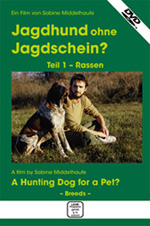 |
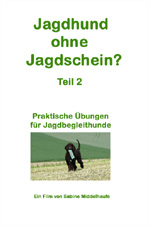 |
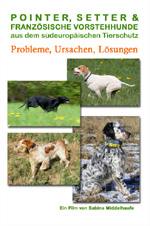 |
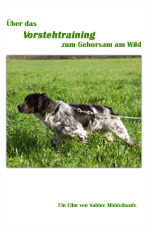 |
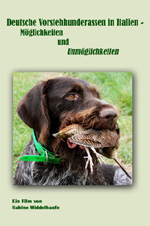 |
| home | Seitenanfang | Menü Fotoalbum |